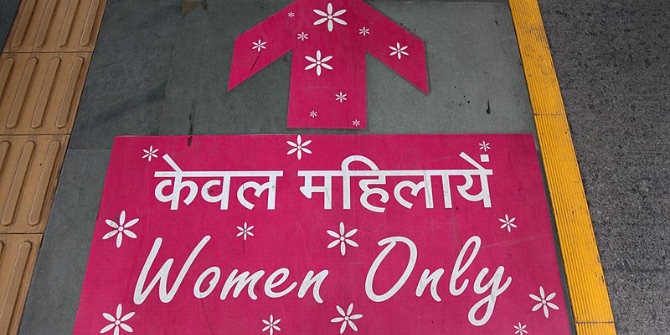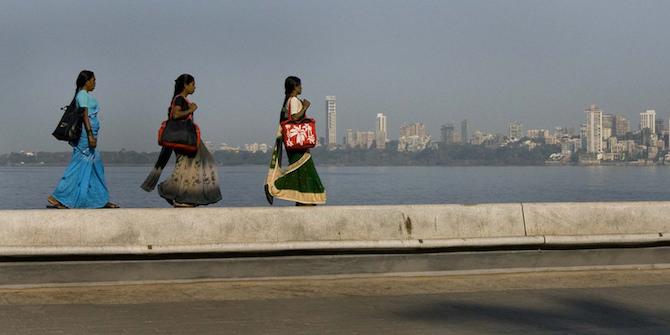The armed conflict in Karen State is Myanmar’s longest running civil war. Looking at three phases of the conflict Shelli Israelsen (Independent Researcher) argues how two interrelated institutions – a participatory governance system and a politically autonomous women’s group – have ushered in a new era for Karen women’s levels of political participation in their communities.
The 2012 ceasefire between the Karen National Union (KNU) and the Burmese government, and the subsequent 2015 National Ceasefire Agreement (NCA), have helped usher in a new era of Karen women’s political participation in their communities inside Burma and within the KNU. In fact, not since the 1994 fall of the KNU headquarters in Manerplaw has such political windows of opportunity been available to Karen women.
Even local KNU leaders have acknowledged that the peace negotiations have reduced conflict and opened up space for increased political participation, and at the KNU’s 15th Congress the leadership declared plans to increase women’s participation in politics. In their study of women’s political participation in Sub-Saharan Africa, Hughes and Tripp found that women’s involvement in politics increased following the end of conflict and theorised that this was due to the desire of emerging leaders to create new institutions and practices, rather than reform old ones, making it easier to adopt more gender-inclusive policies. Missing from the research into women’s political participation after conflict however, is an exploration of the roles insurgent institutions and changing conflict conditions play in promoting or hindering women’s political participation.
The Karen conflict
The Karen conflict can be divided into three distinct phases – the guerrilla activity phase, the civil war phase and the ceasefire phase. During each of these phases two interrelated insurgent institutions – participatory governance system and autonomous women’s groups – have affected Karen women’s levels of political participation in their communities and in the KNU.
In the civil war phase, the insurgent group establishes territorial control over a civilian population and begins a process of institutionalisation where ethnic armed group leaders decide on the type of relationship they would like to have with their local populations. Armed ethnic organisations that choose to include civilians in local government create a participatory governance system that encourages civilian participation, and due to the shortage of men in wartime communities, participatory governance provides women with the opportunity to become politically engaged.
During the civil war phase of the Karen conflict, which lasted from 1949 to 1994, the KNU was organisationally and militarily powerful but the KNU leadership did not prioritise civilian participation in local governance, thereby keeping this avenue for women’s participation in politics closed. However, the splintering of the KNU and the resultant fall of the KNU headquarters in Manerplaw in 1994 was a severe blow to the Karen movement and resulted in large losses of territory that weakened organisational and military capabilities. And, as the Karen conflict de-escalated from the civil war phase to the guerrilla activity phase, the KNU’s leadership, in response to deteriorating security conditions and outside pressure, were obliged to accept greater civilian participation in governance, which opened up the political space for Karen women to become politically active.
The KNU’s weakened position in the guerrilla activity phase, which lasted from 1995 to 2011, meant that political windows of opportunity were opened for Karen women to participate in their communities and fill the political vacuum left by the retreating KNU. For example, during the guerrilla activity phase, there was a growth in the number of female village headpersons as the deteriorating security situation in former KNU strongholds made the position particularly unsafe for men, who the Burmese military viewed as KNU operatives. However, when security conditions improved in the ceasefire phase, which began in 2012, Karen men started reclaiming their positions as village headperson and has led to fewer female village headpersons at the local level.
Another wartime institution that provides political windows of opportunity for women is women’s organisations. However, it is debatable whether women’s groups in wartime communities actually increase women’s political efficacy or if they simply act as a mouthpiece for the armed group’s policies. This was certainly the case with the Karen Women’s Organisation (KWO), a women’s group founded by the KNU, when it was created at the start of the civil war phase in 1949 as a support organisation for the KNU, without a political mandate to increase Karen women’s political participation either in the KNU or in their local communities. In fact, not long after its creation the KWO became inactive at the central level and did not play a role in the KNU Congresses of the 1950s and 60s, thereby limiting this important avenue of Karen women’s participation in KNU decision-making.
Nevertheless, the KWO continued to operate at the local level throughout the civil war phase, albeit in an apolitical role. In the last decade of the civil war phase, when the KWO was re-established at the central level, and in the guerrilla activity phase that followed, when the KNU had fewer resources and lacked the institutional capacity to control the activities of the women’s group, the KWO started to encourage more women’s participation in the KNU as voting delegates with the power to help shape decision-making in the KNU and elect the KNU’s future leaders. In sum, the devolution of the Karen conflict opened up windows of political opportunity for the KWO to exercise greater autonomy and create its own agenda that focused on women’s empowerment, resulting in increased political participation among Karen women.
After the KNU signed a ceasefire accord with the Burmese government in 2012, the terms of the ceasefire agreement in combination with an influx of non-governmental organizations created new avenues in which women could participate in politics. Buoyed by international aid donations and contacts in the international development community, the KWO has continued to extend its mandate and promote women’s political and economic well-being through such initiatives as the Young Women’s Leadership School (YWLS), which serves to increase women’s skills, making them even more likely to participate in their communities and the KNU. An increase in women’s participation has several implications for the conflict and the Karen people, including an increased likelihood of success of the ceasefire agreement, stronger economic growth in Karen communities and more representative government.
The three phases of the Karen conflict have had a varying effect on Karen women’s political participation. The KNU’s declining military capabilities and institutional capacity as the conflict de-escalated from the civil war phase to the guerrilla activity phase and then to the ceasefire stage meant that in many Karen villages, there were more windows of opportunity for women to participate in local governance and also for the KWO to re-define its mandate to include initiatives to increase Karen women’s participation in the KNU at the central level. As the institutional barriers of non-participatory governance systems in Karen villages and a non-autonomous KWO were removed, Karen women were able to become more politically engaged in their communities and in the KNU.
This article gives the views of the author and not the position of South Asia @ LSE blog, nor of the London School of Economics. Please read our comments policy before posting.
This blog had been adapted from an article published in the Commonwealth Journal of International Affairs
Dr. Shelli Israelsen is an independent researcher whose research focuses on issues of gender and conflict in African and Southeast Asian ethnic armed groups. Dr. Israelsen’s research has been published in several peer reviewed journals and she is currently working on a book manuscript on gender and post-conflict development in Southeast Asia.







